A Guide to Managing (And Understanding the Importance Of) Indoor Humidity Levels
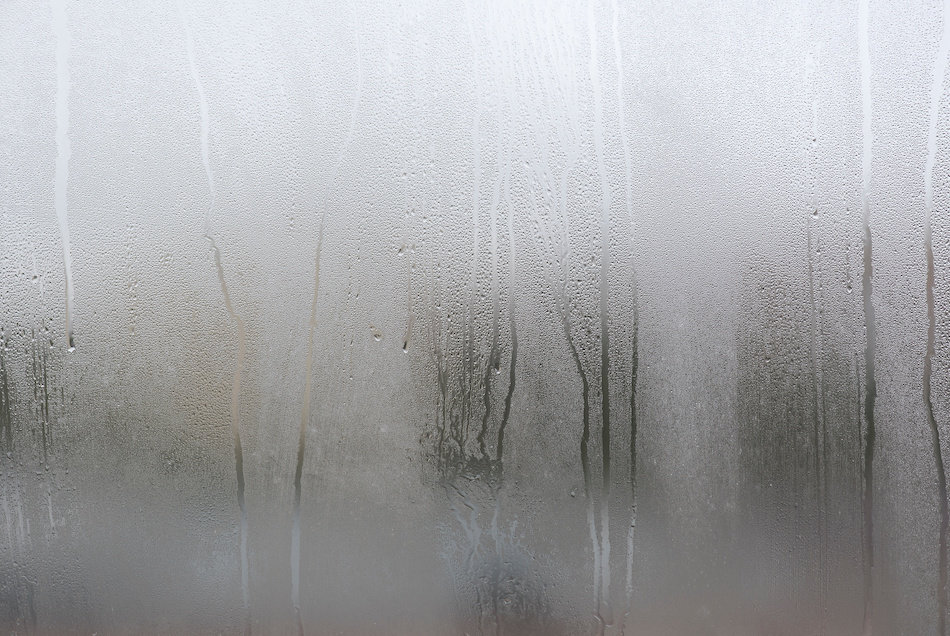 When most people think about creating a comfortable home, they may not consider humidity as an important aspect. In fact, the moisture in an indoor space may affect the way that people think, feel, and live. Specifically, the relative humidity of a house is one of the largest factors in the structure’s indoor air quality, equal to ventilation and the removal of contaminants. Since air quality affects people’s health, maintaining ideal control in the space where they spend most of their time is a vital goal.
When most people think about creating a comfortable home, they may not consider humidity as an important aspect. In fact, the moisture in an indoor space may affect the way that people think, feel, and live. Specifically, the relative humidity of a house is one of the largest factors in the structure’s indoor air quality, equal to ventilation and the removal of contaminants. Since air quality affects people’s health, maintaining ideal control in the space where they spend most of their time is a vital goal.
Humidity tends to be a popular source of conversation, particularly in humid parts of the country during the summer. Moisture control inside the home should be a common part of the conversation, particularly for people with chronic health problems or who spend a lot of time inside. This guide identifies the risks posed to people due to high or low humidity in the home, and ways that they can maintain a proper relative humidity.
Table of Contents
- Relative Humidity and the Importance of Proper Indoor Humidity
- Concerns With High Indoor Humidity
- What Causes Indoor Humidity Levels to Rise?
- Signs Your Home May Have Humidity Levels That Are Too High
- Tips to Reduce & Prevent Moisture
- How Dehumidifiers Work
- Concerns With Low Indoor Humidity
- What Causes Indoor Humidity Levels to Decrease?
- Signs Your Home May Have Humidity Levels That Are Too Low
- Tips to Increase the Humidity in Your Home
- How Humidifiers Work
Relative Humidity and the Importance of Proper Indoor Humidity
The concept of relative humidity concerns the amount of water that the air currently holds. Air that has 100 percent humidity holds as much water vapor as it can. By comparison, air with 0 percent humidity holds no water vapor at all. Indoor humidity is usually not the same as the humidity outdoors, although they are related.
Since a home is an enclosed space, it usually has a relative humidity higher or lower than the air outside. There are many circumstances in the home that may alter the humidity in either direction. Some are deliberate, while others are accidental or a result of defects. Having humidity that is too high or low can create uncomfortable or even unsafe conditions in the home. It can even cause long-term damage to the structure and the health of residents. This is true for either extreme, especially for long periods of time.
Concerns With High Indoor Humidity
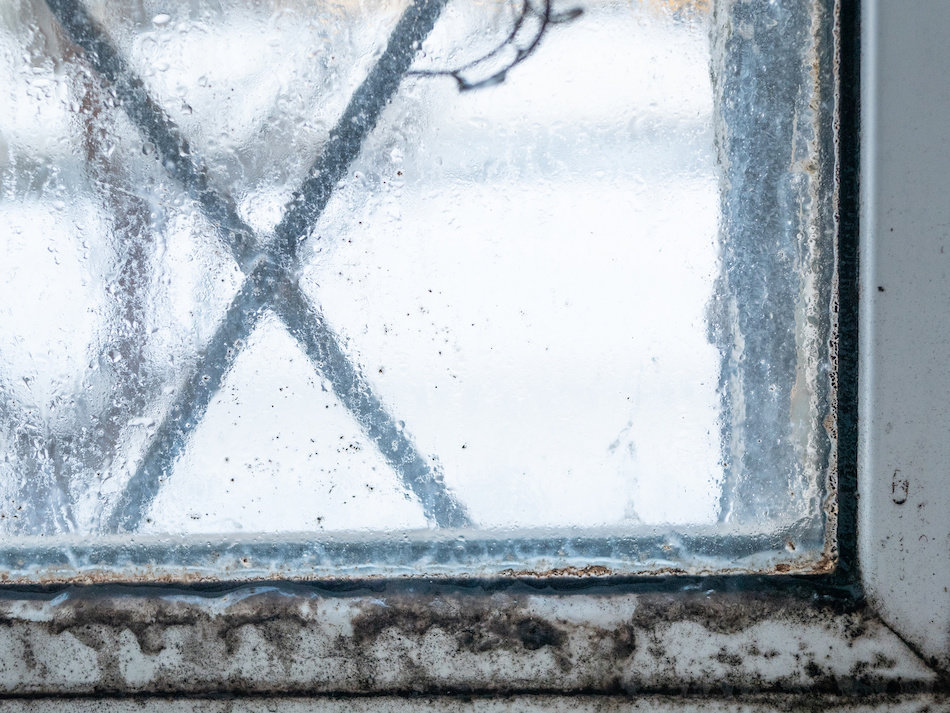
High humidity has a tendency to magnify problems in summer or winter. It makes hot temperatures feel uncomfortable and sticky and low temperatures pull heat from the body more quickly making you feel clammy and cold. Humid areas also provide the ideal breeding ground for fungi, mites, and other pests. Like humans, insects and rodents need moisture to survive. Humidity allows them access to water more easily. This tends to be worse in regions that have mild winter climates.
In parts of the country where the relative humidity is typically high, homes must be designed to combat the humidity to avoid creating problems. If this is your first time buying a home in Naples, for example, this is important information to keep in mind. Allowing the humidity to rise or remain high contributes to an uncomfortable living environment. The right humidity for an indoor space can depend on the ambient temperatures outside. However, in most cases, humidity levels near the middle of the spectrum is considered best.
Health Implications
People who wonder how humidity affects health might start by considering a standing pool of water in the summer. A stagnant puddle attracts mosquitoes and other insects, many of which may carry bacteria or viruses that can cause serious diseases. Left long enough, the puddle will develop algae. If the water is located in a structure, like a window well, it may not be able to naturally drain away. This can allow already damp conditions to continue.
Of course, evaporation may take care of the puddle in short order, but it depends on the relative humidity. If the humidity of a space is too high, the air cannot absorb water quickly enough. This leaves a moist environment that can be difficult for the human body to manage. For example, during a hot summer, the body uses evaporative cooling through sweat to maintain an ideal temperature. People who have conditions that limit their ability to sweat, or who are in extremely high temperatures, may be more likely to suffer from heat exhaustion or heat stroke as a result of high humidity.
There is a reason that hospitals tend to keep lower humidity, particularly in areas where sick or vulnerable people go to receive treatment. Water vapor transmits viruses like influenza more readily. It also carries contaminants and allergens that can aggravate environmental allergies or asthma. Particularly in the indoor space, high humidity is associated with a greater degree of off-gassing from volatile organic chemicals (VOCs). This can negatively affect indoor air quality, causing headaches, skin reactions, and more.
Home & Property
If high humidity poses a number of problems for a dynamic body, it can be just as damaging to the home and property. Since the physical aspects of a house are generally static, they need a relatively constant level of humidity to avoid long-term issues. For example, mildew and mold love a dark, damp environment. Homes in regions with high humidity tend to have more problems with mold as a result. If someone has made a significant investment in Fiddler's Creek real estate, for instance, they'll want to make sure they do not let an issue like this persist. Once it starts to grow, it can be very difficult to completely eradicate.
Wet structures all around the home can slowly disintegrate or fail to function appropriately. Moisture can eat through walls just as surely as a termite will eat through wood, if given enough time and opportunity. The relative softness of wallboard or insulation make them even more susceptible to water damage. And people do not need to have experience with significant water damage to understand what happens when home electronic equipment becomes wet with little chance to dry off. High humidity also makes the HVAC system work harder to maintain an ideal temperature. Since there are many factors that affect indoor humidity, this can happen in almost any environment or housing type.
Impermanent parts of the home can also suffer as a result of high humidity. Wood furniture and flooring are more likely to swell and warp. Doors might become difficult to open or close and indoor paint may blister or peel, depending on the temperature. Even paper documents or books can wear out or fade. And worse mattresses, bedding, and couches can accumulate dirt, bacteria, and dust mites more quickly. Requiring residents to replace large ticket items more frequently.
What Causes Indoor Humidity Levels to Rise?
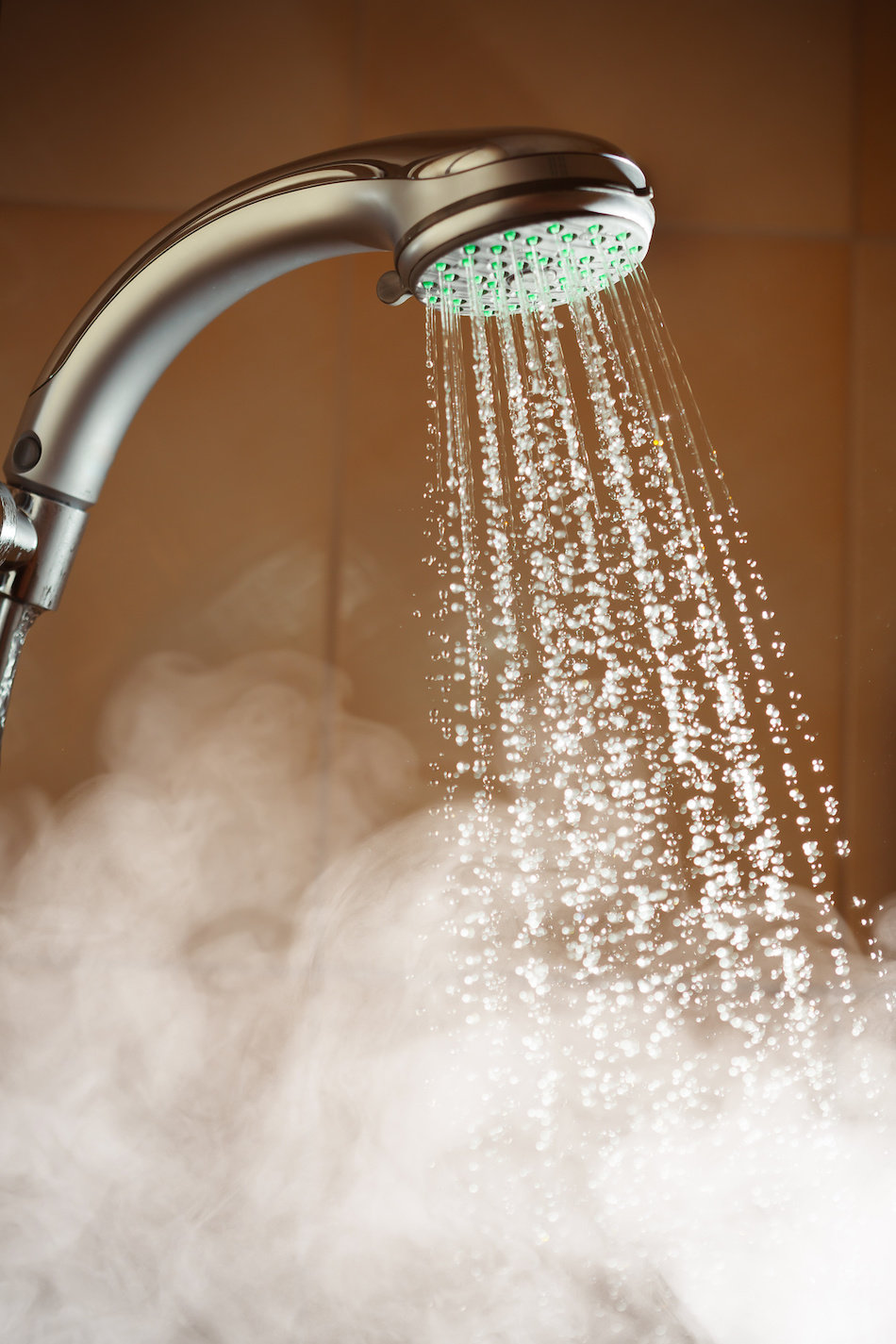
The average humidity of the region may affect indoor humidity to a great degree, but it is not the only factor. Indoor spaces tend to be harbingers of moisture or air quality problems. This is because they are not as exposed to sun, wind, or natural ventilation that would help to eliminate humidity.
Most homes, especially those built within the last few decades, are designed to maintain an ideal target humidity around 30-50 percent. However, there are many factors that may make it harder for the building envelope and systems to keep that number steady. Owning a waterfront home can certainly make this a challenge, but it is not impossible. Residents should have a general understanding of what causes indoor humidity to be higher than normal, and how their actions may affect it. This helps them to identify possible problems and take practical action to solve it, whether this comes through changes in behavior or prompt repairs to parts of the structure.
Actions That Cause High Humidity
As a general rule, members of the household can assume that anything that produces heat will also release moisture to some degree. This is not always coming as a result of the heat. Many aspects of home operation, like cooking or drying clothes, rely on evaporation as part of the process. A pot of boiling water on the stove releases water. A dishwasher uses water to clean, then helps to evaporate the water for drying. A humidifier or diffuser intentionally releases water vapor as its main function. All of these systems increase relative indoor humidity. Even the human body releases water through sweating and breathing. In fact, having too many people in a small housing unit can make it that much harder to manage the humidity in the air.
Failure to use proper ventilation may be one of the biggest sources of excessive humidity in the home. Many rooms in the house tend to have a higher levels of humidity and should be ventilated properly, such as:
- laundry room
- mechanical room
- bathroom
- kitchen
In most cases, the room may have several options to vent water vapor outdoors. For example, most kitchen ranges have a ventilation system on top to extract heat and water vapor. And most bathrooms have a fan that can be turned on and off independently of the light. Home builders understand this, and more often than not these types of rooms will have windows as well. If residents do not use or do not have these ventilation systems, then they must rely on the other ventilation techniques in the home to manage it. This is often insufficient, and can leave the room feeling damp or soupy.
Home Defects That Cause High Humidity
Residents may think that if the relative humidity outside is high, then there is little they can do to lower it inside. This is not true. The home contains a variety of systems that help to raise or lower humidity, keeping it within that ideal middle range. Moisture control, not cooling, was the primary driver of the invention of the air conditioner, after all. However, the building envelope and the condition of the home structure can affect its efficacy significantly.
Structural defects and a few unwise choices in materials may make it far more difficult to control humidity. Windows, one of the most notable sources of home inefficiency, can be a huge part of the problem. Old windows or those made of poor quality promote heat transfer, which changes the way that humidity feels in the home. The use of aluminum window frames and doors makes this worse. As the structure settles over time, there is a higher likelihood of air leaks around windows and doors in general. If the humidity outside is higher, water vapor can pass indoors through air leaks, or due to poor insulation in the walls or attic. This is especially true during the summer, when the ambient outdoor temperature is higher than it is inside.
Otherwise, any aspect of the home that releases moisture indoors can contribute to high humidity. Although many appliances that evaporate liquid have ventilation, this is not always the case. Appliances that vent to the basement, attic, or garage may have the same effect. Even a dripping faucet or leaky pipes can pose serious issues over time.
Signs Your Home May Have Humidity Levels That Are Too High
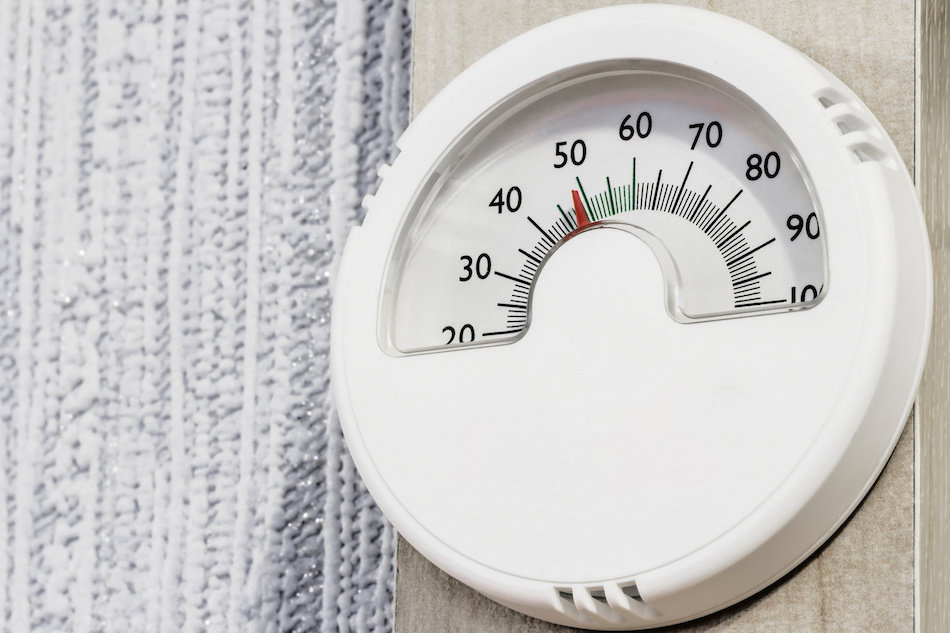
When the weather outside is hot and humid, it may be difficult to tell that the indoor humidity is too high. However, there are several signs that residents can watch for to help them figure out if they need to take action. Clear discomfort is an easy problem to observe, although it is heavily dependent on the person. If the home has a well-maintained air conditioning system that is used regularly, the humidity should not be an obvious problem. Once this first condition under control, people can look for other symptoms.
Moisture is the most obvious. People expect to see water in a sink or a shower recently after use. Hours later, however, this is no longer a normal condition. Water spots on structures that should not get wet, like walls or doors, is a clear signal of a problem. Since moisture is not always visible, members of the household might also look for less-visible symptoms. Musty odors or the presence of silverfish in the home can also be an indication that there may be moisture in the walls or under the floors. And mold accumulation in the corners of rooms is a symptom of a much larger moisture problem hiding out of sight.
Checking Your Humidity Levels
The problem with gauging humidity levels by feel and signs of damage is that they often are far too imprecise. One person’s sense of high humidity might be another person’s feeling that the air is comfortable. The mere presence of moisture is not always a guarantee that the home has excess humidity. As a result, residents may want to look into getting a hygrometer. Not as fancy as it sounds, this tool is relatively inexpensive and provides a good estimate of the humidity level in any particular space.
Typically, hygrometers are designed to operate within a confined space. The smaller the space, the higher the degree of accuracy. As a result, a hygrometer placed in one room of an average-sized home may not be able to identify shifts in humidity based on different rooms, especially those on other floors. The device may need to be calibrated periodically, to ensure better readings.
Tips to Reduce & Prevent Moisture
There are many humidity management tips that residents can employ. The best way to control moisture in the home is to use the house’s ventilation systems properly. Installing exhaust fans in the bathrooms and kitchen can be an expensive endeavor, but it often pays off with a space that works better, feels more comfortable, and prevents mold. Using ventilation every time a heat-producing appliance is on helps to dry out moisture before it has a chance to collect on walls and floors. Newer models tend to feature quiet venting operation that are built-in so that they do not interrupt the general flow of the home.
A centralized air conditioning system is often the best way to extract water and ventilate the home at the same time. People should plan to use the air conditioner as the primary source of cooling, even if they also use other methods like a ceiling fan. Central air conditioning appliances last about 10-15 years, but window units may need replacement sooner.
To get the best effect, residents need to take care of their air conditioning equipment, including replacing the filters regularly. Older systems may not work as efficiently, especially if the home has insufficient insulation or air leaks. When homeowners consider replacing an air conditioner, they should avoid buying a model that is too large for the space. Air conditioners extract heat and moisture, but their controls are set primarily on temperature. As such, a unit that cools too quickly will shut off before pulling out the correct amount of moisture.
Additionally, residents can take steps to ensure that the building envelope is sealed as much as possible, with the ability to stay dry. Fixing air leaks or water leaks promptly avoids allowing moisture to enter from the outside. Buying windows made of vinyl instead of aluminum or wood inhibits moisture collection, and double-glazing slows heat transfer. Property owners should grade the land correctly, so that rains or flooding water flows away from the home. Even placing charcoal around the home can act as a natural dehumidifier.
How Dehumidifiers Work
In coastal regions or areas that have a generally higher humidity index, controlling moisture in the home can be difficult. This is particularly true in places with short summers and cold winters, since people are less likely to use an air conditioner for moisture control in these areas. In addition to a central air conditioner, or for homes that cannot support such a system, residents may want to consider using a dehumidifier.
The way that dehumidifiers work depends largely on the type of system. Some models collect moisture using a material that residents can then replace as needed. Others work much like an air conditioner or heat pump requiring users to empty the water collection reservoir periodically. The goal is to take a humid environment and make it drier by removing water vapor in the air. As a result, it will make it easier to keep the home clean and free of allergens or contaminants. In some cases, proper dehumidification can help stop the spread of infectious diseases.
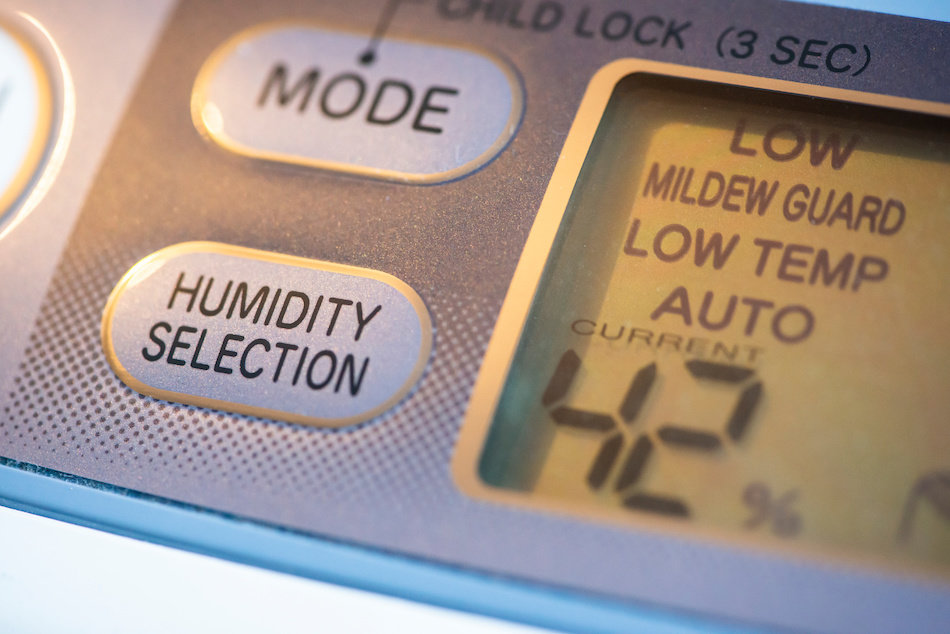
Ultimately, the best system for the job is going to depend on the way that residents intend to use it. There are so many unique factors that affect how people control humidity. People may not need to use it very often or, they may also need to use it several times a day. Additionally, a dehumidifier can be a necessary part of remediation for water damage. Knowing how and when to use it increases the likelihood of long-term benefits.
Dehumidifier Features to Consider
There is a wide variety of dehumidifiers on the market. Residents should select one based on what they need or want from the appliance. Dehumidifiers can be as inexpensive as $20 or $30 and up to several hundred dollars. A person’s budget will limit the size of the machine they can afford, as well as additional features. Members of the household may want to look at the following features as they make a decision:
- size of the machine, and where it must be placed in the home
- ability to relocate the appliance or connect it to the home’s ventilation or drainage system
- capacity, which ranges from cups to gallons of water extracted per day
- type, which usually includes refrigerant/compressor, desiccant, or ventilation
- extra materials needed to operate that require replacement, like silica gel or filters
- ease in opening the appliance for water removal or cleaning
- efficiency and energy consumption through normal use
- predictable cost to operate the appliance on a daily basis
- ability to run in colder temperatures, which is ideal for cold regions or basements
- how it operates, and whether someone must turn it on/off manually
- presence of a humidistat, which measures the humidity nearby and can trigger automatic operation
- noise generated while the appliance is running
It is worth noting that most dehumidifiers are designed to work within a relatively small space, such as a single bathroom. People may need to purchase more than one if they intend to control the humidity in larger, open-concept spaces.
Types of Dehumidifiers
There are essentially three types of dehumidifiers that residents can choose for moisture control. The way that the appliance operates can significantly affect its cost and efficacy. The most effective models generally use refrigerant and a compressor. These work a lot like an air conditioner, in that they draw in room-temperature air across an evaporator coil that extracts heat and moisture. These machines tend to cost the most, and can remove several gallons of water from the air each day.
Some models are referred to as desiccants. This means that they use a particular material that absorbs moisture. Once the material is saturated, residents can replace it with fresh product. Silica gel is a common desiccant. People may be familiar with silica through the sealed packets that food, pill and shoe manufacturers place in packages of to keep them dry and fresh. These models usually cost the least, but take longer, are designed to dehumidify small spaces, and require the additional investment of replacing absorbent material.
The third type promotes ventilation of the space, and are often compared to exhaust fans. Residents may have exhaust fans in various parts of the home already, like the bathroom or laundry room. The fan draws hot or humid air into the box and expels it outwards. An exhaust fan that is built into the home will often push the humid air outside. Ventilation dehumidifiers may need to be placed near an open window or door to have the same effect.
People should also consider how they intend to use their desired dehumidifier. Portable systems can be moved, even if they are not necessarily easy to relocate. Some appliances must be fit into one space and kept there permanently, more or less. Residents in a larger home or an area with high dehumidification needs may want to think about a whole-house system. This approach allows them ideal moisture control for the entire house, instead of having to target many smaller rooms separately.
Dehumidifier Mistakes
Just like any other appliance in the home, members of the household can cause problems by failing to use a dehumidifier appropriately. Many dehumidifiers work like an air conditioner or heat pump, which means that they have the same kind of maintenance needs. Dirty air filters can cause the entire system to fail or require expensive repairs.
Systems that are not connected to the home’s drainage system will probably have a collection bucket. If people do not empty the water and clean out the bucket regularly, it becomes a standing water hazard. This makes it more likely to overfow, trigger a short, or even grow mold. Buying a unit with a very large capacity does not bypass the need to keep the collection bucket clean and clear on a frequent basis.
Residents must keep in mind that a dehumidifier is not intended to solve the entire problem of the home’s excessive humidity. They still need to use an air conditioner or other ventilation systems when appropriate. Using the appliance too frequently can make the home too dry, or put strain on the equipment. People should research how and when to use the appliance, so that they get the best results.
Concerns With Low Indoor Humidity
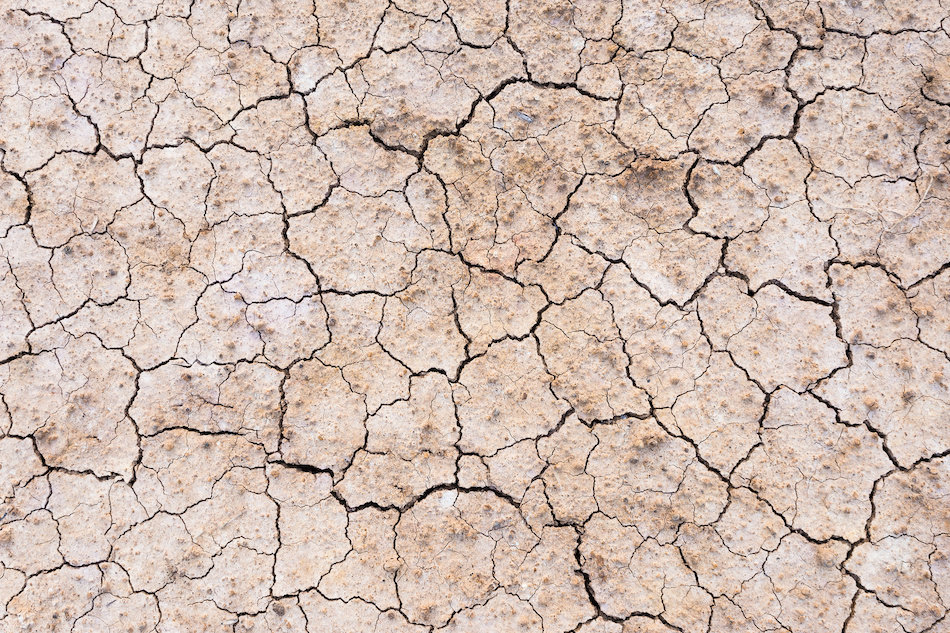
Anyone who has flown on an airplane or spent a day or two in the hospital knows that extremely dry air is not always a good thing. Although high humidity often presents more problems for residents of a home, low humidity can be an issue, as well. Dry air tends to make some health conditions worse. It can also put excessive wear on certain parts of the structure, wood in particular.
In many cases, people know that the home’s humidity levels are too dry because it feels uncomfortable. It is important to remember that humidity slightly less than 50 percent inside the home is the target. A range of 30-50 percent, regardless of the humidity outside, avoids the problems posed by air that is too wet or too dry.
Health Implications
People can suffer negative health effects from very low humidity just as surely as they have to deal with high humidity. In particular, very dry air can make the respiratory tract dry out and trigger cold-like symptoms. The body has a number of mucous membranes that need to stay relatively moist for ideal health. If the air is too wet, they can make a great home for bacteria and viruses. If they are too dry, they are more likely to swell, crack, or bleed. Although contaminants typically do not thrive in dry air, the dryness can increase the likelihood of cracks or open sores on the skin. This can decease the body’s natural defenses, and increase the chance of infection.
Some conditions are aggravated by particularly dry air. Someone who is prone to dry skin or eczema may experience it more often when the air is too dry. This is even more of a problem during the winter, when the relative humidity is often lower than it is during the summer. Dry air often feels cooler, which may make people turn on the heat more frequently. Paradoxically, this may dry out the air even further, only making the symptoms worse.
Home & Property
Homes in regions with extreme changes in temperature throughout the year tend to have problems with too little or too much humidity. The change in temperature and moisture cause certain aspects of the structure to expand and contract. This is why hardwood flooring installers often recommend that people allow at least a few days, if not several weeks, for the wood to acclimatize. Anything made out of wood or another substance that can absorb or expel water may have this problem. Moisture control is a way to keep certain materials from pulling away from the structure, materials such as:
- window frames
- door frames
- flooring
- roofing frame, decking, or underlayment
- siding
Paint, like many chemicals, needs a middling target humidity to stay on the wall for the longest period of time. If it gets too dry, it will crack or peel. Even furniture can crack and separate over time if the air is left too dry for too long. Slightly drier air is often better for fabrics and textiles, but it increases the likelihood of damage from friction. Static electricity usually does not cause a lot of problems, but can create a short, startling shock if people do not know how to manage it properly.
What Causes Indoor Humidity Levels to Decrease?
People who live in areas with an arid climate are more likely to struggle to keep the indoor humidity in a moderate range. However, this often depends heavily on the outdoor temperature. In regions with high summer temperatures and little water vapor in the air, relative humidity may approach 0 percent at the hottest times of the day. Keeping the temperature lower may help to preserve some of the existing humidity, but it relates to the method.
Since HVAC equipment is designed largely for moisture control, it can be the most common source of excessive dryness inside the home. Most furnaces and heat pumps are vented outside the home, which means that any residual moisture is expelled. Air conditioners extract moisture by definition, but do not have a means to add it back. Overuse of this equipment can make the problem worse.
Signs Your Home May Have Humidity Levels That Are Too Low
Just as people might use a hygrometer to measure high humidity, they can use this same device to see how dry the air gets in the home. Otherwise, there are a number of signs that residents should observe for an indication that they need to add moisture:
- cold symptoms that never seem to go away
- dry skin or eczema
- the need to water indoor plants more frequently
- the feeling that the home is too cold, even when the thermostat is set to a higher temperature
- chapped lips or hands independent of outdoor activities
- peeling paint or wallpaper on indoor walls
- static electricity on walls and floors
- creaking floors or boards that have separated
- wood furniture that bends as it shrinks
- increased air leaks around windows and doors
Many of these can also be signs that the indoor humidity is fluctuating too much.
Tips to Increase the Humidity in Your Home
Most of the approaches that people use to decrease the humidity in an indoor space can be reversed to help keep some of the moisture. Adding a heat source to the water increases the potential effect. For example, residents might consider:
- line-drying warm, wet clothing indoors
- leaving the door open while bathing or taking a shower
- allowing a pot of water to boil safely on a back burner of the stove
- using a humidifier or diffuser with water
- lightly spritzing washable textiles with warm water
For safety, people should still use proper ventilation for appliances that generate fuel byproducts as well as heat and water vapor, such as a gas stove. Venting a clothes dryer or furnace in the attic or basement can raise humidity, but also might release deadly chemicals if the appliance runs on natural gas or heating oil. Residents also need to remember that increasing humidity in one room does not necessarily spread moisture throughout the whole home. If the entire house requires a higher level of humidity, they may need to consider a broader solution like a humidifier.
How Humidifiers Work
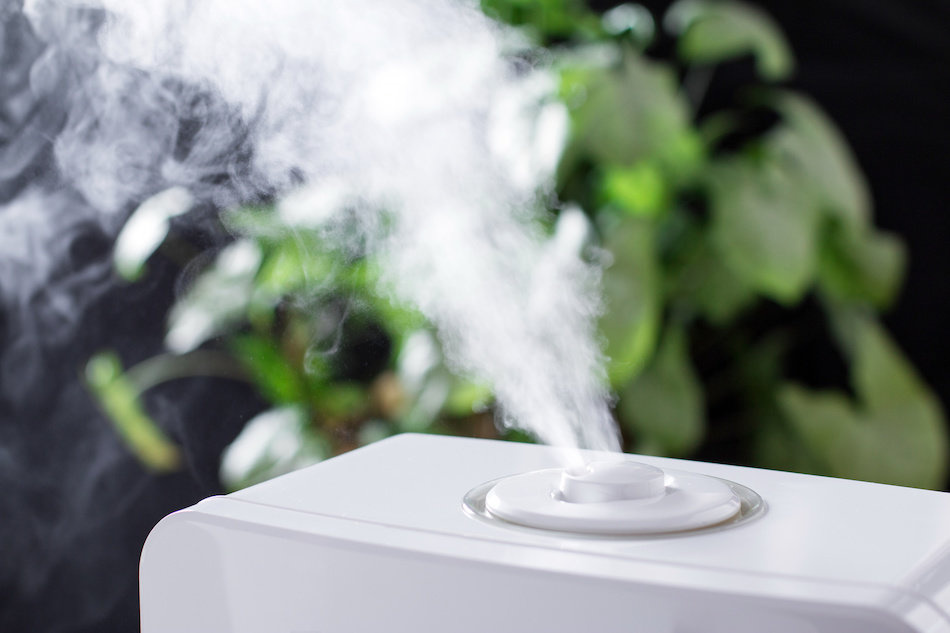
Humidifiers use a variety of means to operate. Generally, they take a moist surface and use it to increase the humidity of air that is circulated throughout a room. This usually involves a tank of water that varies in capacity, based on the type of machine and the size of the area that needs additional humidity. The most traditional sources of humidification rely on heating water, but newer models now offer the option of producing a cool mist. This is important, since not all parts of the home can safely sustain boiling water for long periods of time.
Since the rooms in the home may have highly variable levels of humidity, people need to think about which spaces they must humidify. As a general rule, the rooms with the lowest levels of humidity will be the ones without heat-producing appliances. Specifically, bedrooms and attics may be the driest parts of the house. This is why people often use room humidifiers.
Humidification requires a careful hand to avoid causing problems from overuse. Since a kitchen or bathroom may be far more humid than the rest of the house, people may not want to target whole-house humidifiers to suit the rooms with the lowest humidity. Creating an ideal balance helps members of the household feel more comfortable and healthy without triggering issues from high humidity.
Humidifier Features to Consider
The type of humidifier that people will choose relates to their need to increase humidity. In dry areas, residents may need to humidify the entire home year-round to avoid negative effects from low humidity. In regions with moderate humidity, people may simply need to increase humidity in their bedrooms or major living spaces seasonally or at certain times of the day or night. As members of the household browse products, they should look for:
- square footage needed to humidify
- tank capacity, usually measured in gallons
- how easy it is to relocate from room to room
- manual or automatic operation
- footprint, and whether it can be placed on a table or countertop
- safety, especially for warm mist models that produce steam
- ability to remove the tank for refill and cleaning
- whether it can be connected to the home’s filtration and water systems
- noise produced during operation
- ease in replacing filters and other removable parts
- whether filtered water is a necessity to avoid hard water deposits
The square footage is determined not just by size but also room design. An open floor plan will receive better humidification than a series of separate rooms from a single unit. People with larger homes may need to consider multiple options or a whole-house humidifier for ideal results.
Types of Humidifiers
There are four types of humidifiers that people might consider for the home. They may rely on vaporization, evaporation, ultrasonic waves, or an impeller. Most people are familiar with vaporization humidifiers. These room humidifiers have a tank of water that is released as a vapor into the air. Most products of this type uses a warm mist, which means that they contain a heating element that boils water.
Evaporative humidifiers work a little like an air conditioner, only in reverse. Instead of using a coil to absorb heat and moisture, they have a moistened filter. As the air passes through it, it absorbs water vapor. This conditioned air is then circulated throughout the room. Unlike a vaporizer, these products use cool mist, which means that they will not cause burns if someone passes a hand through it.
Ultrasonic humidifiers may rely on cool or warm mist to convey water vapor. A nebulizer vibrates, which moves waves and releases water into the air. The control of the waves means that the machine operates beyond normal human hearing, making the process very quiet. By comparison, an impeller uses a spinning disk to create the cool mist, which is often louder.
Members of the household should decide if they want a room humidifier or a whole-house model. If the home is located in an arid region, a whole-house humidifier may be the most appropriate choice for moisture control. For management of personal conditions like eczema, people might prefer a portable room model that they can reposition as needed.
Humidifier Mistakes
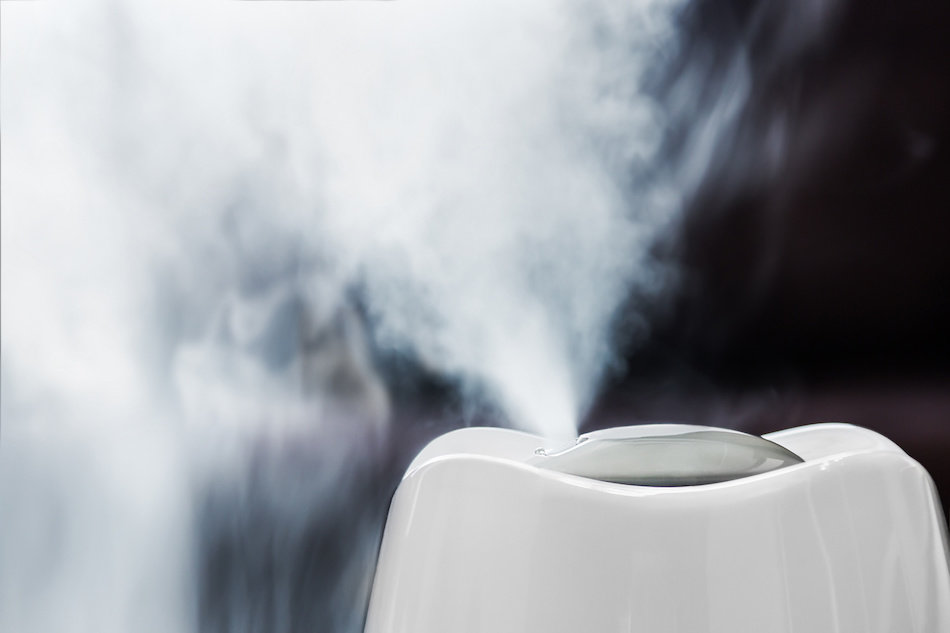
Just like a dehumidifier, there are certain types of problems that can arise when residents do not install the right kind of humidifier or fail to use it appropriately. Homes are designed to maintain a regular humidity. As such, using a humidifier too much at certain times and not enough in others can produce many of the same issues related to low humidity. Overuse can become a serious concern, as high humidity may damage the property more quickly, and have higher health risks.
Otherwise, buying the wrong kind of unit or using it incorrectly can negate many of the potential benefits. Consistently low humidity in the home may take a larger solution than most room humidifiers are able to manage. People may burn out the equipment on a smaller machine if they are running it constantly. Many humidifiers need to dry properly before reuse, making regular operation difficult.
Since most humidifiers have a water tank, it needs to be stored and maintained properly. Hard water will eventually collect mineral deposits. The tank itself may be relatively easy to clean, but accumulation could ruin the machine prematurely. Additionally, people have to keep an eye on the water in the tank. If they do not drain it dry regularly, it can breed mold, bacteria, or viruses. These may be spread into the air as part of the humidifying process, increasing the likelihood of sickness in the home.
Although the humidity in any area can fluctuate widely throughout the day, there are certain places where high or low moisture is a common problem. People may see it as an unavoidable, uncontrollable issue. But in fact, there are many reasons to keep a home at a moderate indoor humidity level, and several serious concerns that may arise if residents do not.
Excessively humid or dry air can cause health problems or cause chronic conditions to worsen, depending on the circumstances. It may also damage the structure of the home, requiring costly repairs or early replacement of materials and systems. Taking a careful approach to moisture control is the best way to mitigate the risk. High or low humidity is not simply a matter of comfort, although comfort is still important. When people take humidity seriously, they are more likely to see it as an issue important to overall home maintenance.
